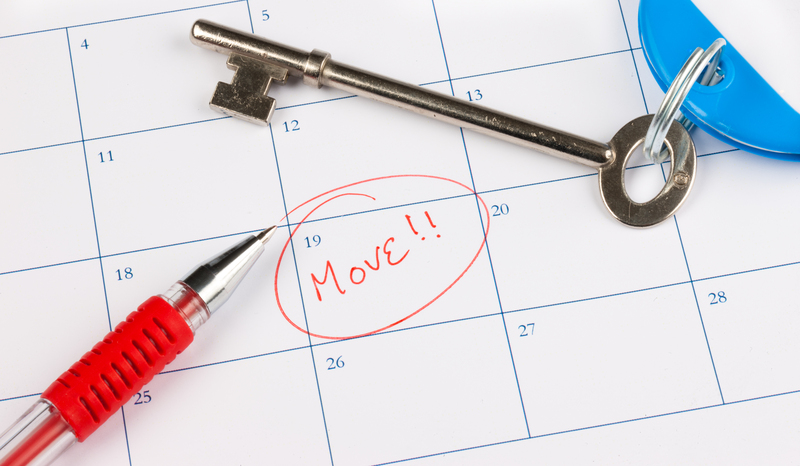The Ultimate Guide to Packing for a Smooth Move
Posted on 12/06/2025
The Ultimate Guide to Packing for a Smooth Move
Moving to a new home can evoke a mix of excitement and anxiety. Whether you're relocating across town or the country, the process requires planning, dedication, and the right techniques. This ultimate guide to packing for a smooth move will empower you with everything you need to minimize stress and maximize efficiency. Learn expert packing tips, moving essentials, and organizational hacks for a seamless relocation experience.
Why Proper Packing Matters for Your Move
Packing smart can make the difference between a hectic move and a seamless transition. Well-packed boxes are less likely to result in broken items, misplaced belongings, or last-minute chaos. By preparing your items carefully and labeling everything clearly, you'll enjoy peace of mind and a much more comfortable settling-in process at your new home.
Top Benefits of an Organized Move
- Less stress and confusion on moving day
- Quicker and easier unpacking at your new place
- Protection for fragile and valuable items
- No lost boxes or missing essentials
- Smoother workflow for professional movers (if you hire them)

Step-by-Step Plan to Pack Efficiently for Your Move
Strategic organization is at the heart of a successful move. Follow this comprehensive plan, and transform what could be an overwhelming task into a satisfying achievement.
1. Start with a Moving Checklist
A detailed, room-by-room moving checklist keeps you on track so nothing gets overlooked. Consider the below when creating your list:
- Book a moving company or a rental truck well in advance
- Collect packing supplies (boxes, tape, markers, bubble wrap, etc.)
- Sort items and declutter what you no longer need
- Schedule disconnection and setup of utilities
- Notify relevant parties of your address change (post office, banks, subscriptions)
- Plan packing by starting with less-used rooms first
- Set up a separate box for moving day essentials
2. Gather the Right Packing Supplies
Investing in quality moving supplies will save you time and help avoid accidents like broken dishes or stained clothes. Here's what you'll likely need:
- Sturdy cardboard boxes in various sizes
- Heavy-duty packing tape
- Permanent markers for labeling
- Bubble wrap and packing paper
- Stretch wrap for securing furniture
- Furniture pads or blankets
- Ziplock bags for small parts
- Scissors and box cutters
- Labels or colored stickers for color-coding
- Plastic bins for valuables and sensitive items
3. Declutter Before Packing
Packing is the perfect time to declutter your home. Moving belongings you no longer need is a waste of effort, space, and money. Sort your items into four categories:
- Keep: Items you use or love
- Sell: Items in good condition but no longer serve you
- Donate: Items that can benefit others
- Discard: Broken, outdated, or unusable items
Tip: Decluttering lightens your moving load and helps you start fresh at your new home!
4. Pack by Room and Category
To pack for a smooth move, tackle one room at a time. Group similar items together (such as books, kitchenware, or linens). It's wise to label each box with its destination room and a brief description of its contents. This makes unpacking much simpler.
- Start with non-essential rooms like guest bedrooms, storage spaces, or the garage
- Pack up seasonal items you won't use before moving day
- Leave everyday essentials for last
5. Use Smart Packing Techniques
Packing smart greatly reduces the risk of breakage and keeps you organized. Here are some expert tips:
- Use small boxes for heavy items, and large boxes for lighter belongings
- Wrap fragile items in bubble wrap or clothing for added protection
- Fill empty spaces in boxes with towels or packing paper to prevent shifting
- Seal boxes securely and reinforce corners with extra tape
- Label boxes on multiple sides--not just the top
- Keep fine jewelry, important documents, and valuables with you during the move
- Disassemble larger furniture and store screws/bolts in labeled bags taped to the piece
- Take photos of electronics and wiring before disconnecting
Pro Tip: Pack a suitcase as if you're going on vacation--this way, you'll have clothing and toiletries easily accessible for the first few days in your new home.
Packing Room-By-Room: Detailed Tips for a Smooth Move
Bedroom Packing Tips
- Pack off-season clothing first. Use wardrobe boxes for clothes on hangers.
- Keep expensive jewelry and sentimental items in a clearly labeled, secure box.
- Disassemble beds and store all hardware in baggies attached to the bed frames.
- Label linens and bedding by room for easy unpacking.
Kitchen Packing Tips
- Wrap plates vertically (like records) to prevent breaking.
- Use dish packs or cell dividers for glassware.
- Bundle utensils in sets and wrap with rubber bands.
- Use original packaging for appliances when possible.
- Donate or dispose of pantry items you won't move; use coolers for perishables.
Living Room Packing Tips
- Label cords and remotes for easy setup in your new home.
- Wrap TVs and electronics in blankets or special boxes.
- Tie together curtain rods, brooms, or tall items.
- Use stretch wrap to secure drawers, doors, and cushions on furniture.
Bathroom Packing Tips
- Use plastic bins for liquids and toiletries to prevent spills.
- Keep a separate small bag for everyday items you'll need until the last moment.
- Dispose of expired products, and pack medications in a carry-on bag.
Garage and Storage Areas Packing Tips
- Drain fuel from gas-powered equipment a day before moving.
- Bundle and label tools.
- Use sturdy boxes for heavy tools; clearly mark boxes containing hazardous materials.
- Sort through holiday decor and sports equipment, purging what you no longer use.
How to Label and Organize Your Moving Boxes
Clear labeling is key to a smooth move. The method you use can determine how easy unpacking becomes. Here are a few popular systems:
- Room-based labels: Indicate which room the box belongs to (e.g., "Kitchen," "Master Bedroom").
- Color coding: Use colored stickers or markers for each room.
- Numbering: Assign numbers, and keep a separate master list of what each box contains.
- Mark boxes with "Fragile" or "This Side Up" when appropriate.
Pro Tip: Place labels on the sides and tops of boxes so identifying them is easy, no matter how they're stacked in the moving truck.
Packing Timeline: When to Start Each Task
- 6-8 weeks before your move: Begin cleaning out rooms, start decluttering, and book your moving company.
- 4 weeks out: Begin packing non-essentials, create your labeling system, and notify service providers of your change of address.
- 2 weeks out: Pack most of your belongings, leaving only the essentials out.
- 1 week out: Confirm arrangements with movers, finish packing, and set aside personal essentials and important documents.
- Moving day: Pack up beds, toiletries, and last-minute kitchen items.
Essential Packing Tips for a Stress-Free Relocation
- Purge before you pack: The less you move, the easier and cheaper your move will be.
- Label everything: Over-labeling is better than being vague.
- Don't overpack boxes: Boxes should weigh no more than 50 lbs to prevent injury and damage.
- Use linens, towels, and clothes as extra padding.
- Have a plan for pets and children on moving day.
- Keep important and valuable items with you at all times.
- Take photos of electronics setup and how furniture is assembled.
Special Considerations: Moving with Kids, Pets, and Plants
How to Make Moving Easier for Kids
- Talk about the move early and involve children in packing their rooms.
- Pack a comfort bag with favorite foods, toys, and clothes.
- Keep routines as normal as possible during the transition.
Tips for Moving with Pets
- Keep your pet's essentials accessible: food, toys, crate, and bedding.
- Consider boarding or having a friend watch your pet on moving day for safety.
- Let pets adjust to a designated "safe room" at the new home, gradually expanding their access.
Packing and Moving Houseplants
- Prune and water plants a few days before the move (not right before).
- Pack plants in open boxes, securing pots so they don't tip.
- Label boxes as "Live Plants--This Side Up."
- If moving a long distance, check regulations for plant transportation.
What Not to Pack When Moving
Some items are hazardous or difficult to transport and should not be part of your moving load. These include:
- Perishable foods or open containers
- Flammable, explosive, or corrosive materials (paint, propane tanks, car batteries)
- Important documents you'll need to access quickly
- Valuables, cash, and irreplaceable sentimental items
- Pets and live plants (depending on moving regulations and distance)
Final Moving Day Preparation
Pack a first-night box with essentials, including:
- Toiletries and medications
- Bed linens and pajamas
- Basic kitchen supplies (snacks, coffee, paper plates, utensils)
- Chargers and basic tools
- Cleaning supplies
Leave out a broom, dustpan, and trash bags to clean up your old home before you leave!

After the Move: How to Unpack Smoothly
- Begin with bedrooms and bathrooms, then tackle the kitchen and living areas
- Use your checklist to account for all boxes
- Set up beds first for a restful first night
- Unpack systematically, focusing on essentials before decor and non-essentials
- Recycle all used packing materials responsibly
Conclusion: Packing for a Smooth Move is Possible!
With preparation and organization, packing for your upcoming move can be smooth and even enjoyable. Use the strategies from this ultimate guide to packing for a move--including checklists, room-by-room advice, and expert tips--to cut the chaos and keep things under control. Remember, the secret is to start early, declutter often, label clearly, and keep essentials accessible. Here's to settling into your new home with ease, confidence, and a smile!
Looking for even more moving hacks or want a printable moving checklist? Connect with your local moving experts or browse our blog for resources designed to ensure your move is as hassle-free as possible.
